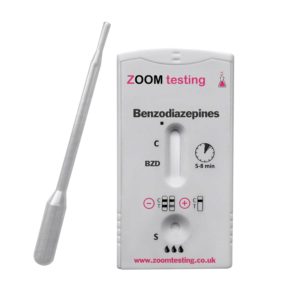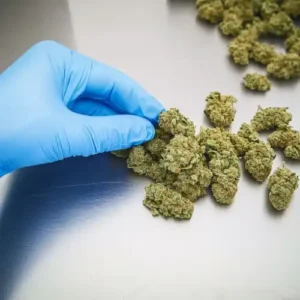In this article, we explore the subject of Benzodiazepines. What kind of drugs are they? Who invented them? And, for how long do Benzodiazepines stay in your system?
What are Benzodiazepines?
Benzodiazepines are a type of sedative, which means that they enable a slow down of brain and bodily functions. In terms of sedative drugs, benzodiazepines are the most prescribed ones. They can be short or long-acting. Temazepam and Rohypnol are examples of short-acting ones that are used as sleeping tablets (hypnotics). lorazepam and diazepam are longer acting ones that are prescribed for treating anxiety (anxiolytics).
Alprazolam, is sold under the brand name Xanax and is also a benzodiazepine. Xanax is prone to misuse, which can cause addiction.
These drugs are effective in quickly relieving severe anxiety symptoms since they start working in 30 to 90 minutes.
Benzodiazepines are also used as a muscle relaxant, to treat mania and epilepsy, as a pre-operative relaxant as well as in treating withdrawal symptoms of alcohol and opiates.
In the UK, the most popular benzodiazepine is Valium. Besides their medical use in the UK, benzodiazepines are also used as a recreational drug. Slang names for the drug include benzos, temazies, jellies, eggs, moggies and vallies.
The types and number of benzodiazepines being used as recreational drugs is constantly changing, make it hard to keep track of. For example, in Canada, Toronto’s drug harm reduction services noted use of at least 13 different types of benzodiazepines in 2022.
How They Work
Benzodiazepines work by increasing the amount of GABA (Gabba Amino Butyric Acid) a brain neurotransmitter. Taking this drug calms the brain. This can help reduce anxiety, muscle spasms, and seizures. They are often used in the treatment of anxiety disorders, panic attacks, insomnia, and some types of seizure disorders. However, benzodiazepines can also be highly addictive and have a high potential for abuse, leading to withdrawal symptoms and other negative side effects if misused. Therefore, it is important to only take benzodiazepines as prescribed by a healthcare professional and to follow their instructions closely. Additionally, they should never be combined with alcohol or other drugs that depress the central nervous system.
History
In the 1960s, tranquillisers were created as a non-addictive drug that was used for treating insomnia and anxiety. They were made to be a safer option for barbiturates, which were known to be addictive and could be very harmful in an overdose.
Women, in particular, seem to suffer the side effects and become addicted to tranquillisers, even though doctors have been increasingly prescribing them for over 20 years. In the late 1970s, the severity of the problem became known. In 1979 there were over 30 million tranquillisers prescriptions and in 2012 that number plummeted to 11 million (see following prevalence section).
Benzodiazepines have been used recreationally for a long time and users take them for their sedative and relaxing properties.
However, benzodiazepines can also have serious side effects and can be highly addictive. Prolonged use can lead to tolerance and dependence, making it difficult for users to quit using them. In addition, benzodiazepines can cause drowsiness, impaired motor coordination, confusion, and memory problems. Overdose is also a concern, especially when combined with alcohol or opioids.
Despite these risks, benzodiazepine abuse continues to be a problem. In fact, a survey conducted by the Substance Abuse and Mental Health Services Administration revealed that nearly 5 million Americans aged 12 and older misused benzodiazepines in 2019. This highlights the need for improved education and prevention efforts.
There are many variables that will determine how long benzodiazepines are detectable in the body. One important consideration is the type of drug test being used to do the testing (urine, saliva or hair) as each type of tests works within a specific timetable of detection.
Benzodiazepines are only detectable within a short time-frame with some types of drug tests. Other types of drug tests can still pick up drug usage up to three months later.
Another important factor that will determine how long benzodiazepines are detectable in the system is the physical makeup of the individual. Here a number of variables combine – body mass, physical activity, state of health, hydration – making it virtually impossible to indicate an exact amount of time in which benzodiazepines will show up on a drug test.
Detection Times for Benzodiazepines
Benzodiazepines can be detected by various testing methods. Saliva drug tests are best for detecting very recent use or for impairment. Urine tests detect drug use in the last few days. A hair follicle test offers the longest history but can’t be used until a week after drug usage.
How Long Do Benzodiazepines Stay in Your System? The following is an estimated range of detection times for Benzodiazepines using the three main types of drug test:

Saliva Drug Test: Up to 48 Hours
Urine Drug Test: 2-14 days
Hair Follicle Drug Test – up to 90 days
Factors Affecting Benzodiazepine Detection Times
Several factors can influence how long benzodiazepines stay detectable in your system. These include:
- Dosage: Higher doses generally lead to longer detection times.
- Frequency of use: Chronic use can cause the drugs to accumulate in your body, increasing detection windows.
- Metabolism: People with faster metabolisms may clear the drugs more quickly.
- Age and health: Older individuals and those with liver or kidney issues may eliminate benzodiazepines more slowly.
- Drug interactions: Taking benzodiazepines with other substances that affect liver enzymes can impact detection durations.
Risks of Benzodiazepine Misuse
While benzodiazepines have legitimate medical uses, misusing these drugs can lead to serious risks, such as:
- Addiction and dependence
- Impaired coordination and judgment, increasing accident risks
- Memory problems and confusion
- Dangerous interactions with alcohol and other depressants
- Withdrawal symptoms when stopping use abruptly
- Overdose, especially when combined with opioids
If you’re struggling with benzodiazepine misuse, reach out for professional help. Treatment options like therapy and tapering can aid in overcoming dependence safely.
The Law
As per the Medicines Act, all benzodiazepines are considered Prescription Only Medicines, which mean that only a pharmacist can legally supply them once they have a prescription from a doctor.
As per the Misuse of Drugs Act, they are a class C drug and are controlled accordingly. Possessing the drug has a maximum prison time of 2 years. Supplying the drug to another person and producing the drug has a 14-year maximum sentence along with a fine.
The maximum sentence is seldom used. To learn more, check out the sentencing webpage on the Release website.
For more information of drug tests for Benzodiazepines, please contact Zoom Testing.
Photo: “Benzos” by Anthony Cunningham for Zoom Testing
Zoom Testing is a leading UK drug testing company and a supplier of Drug Test Kits.






